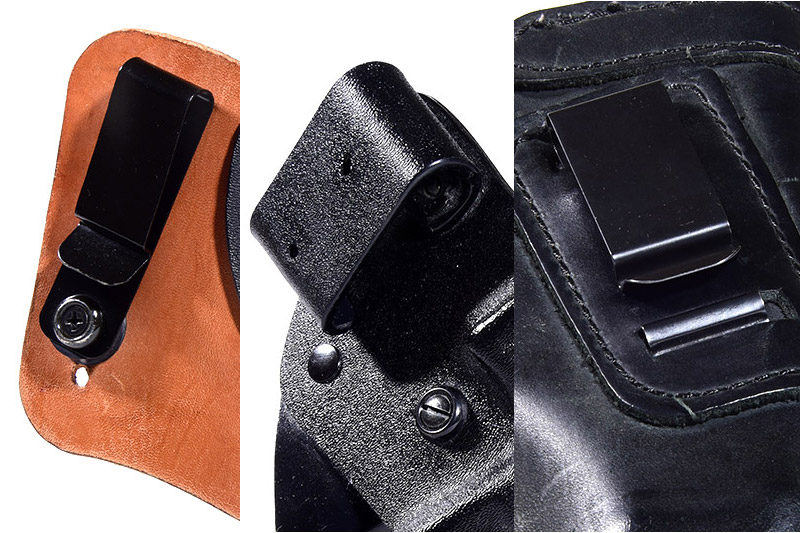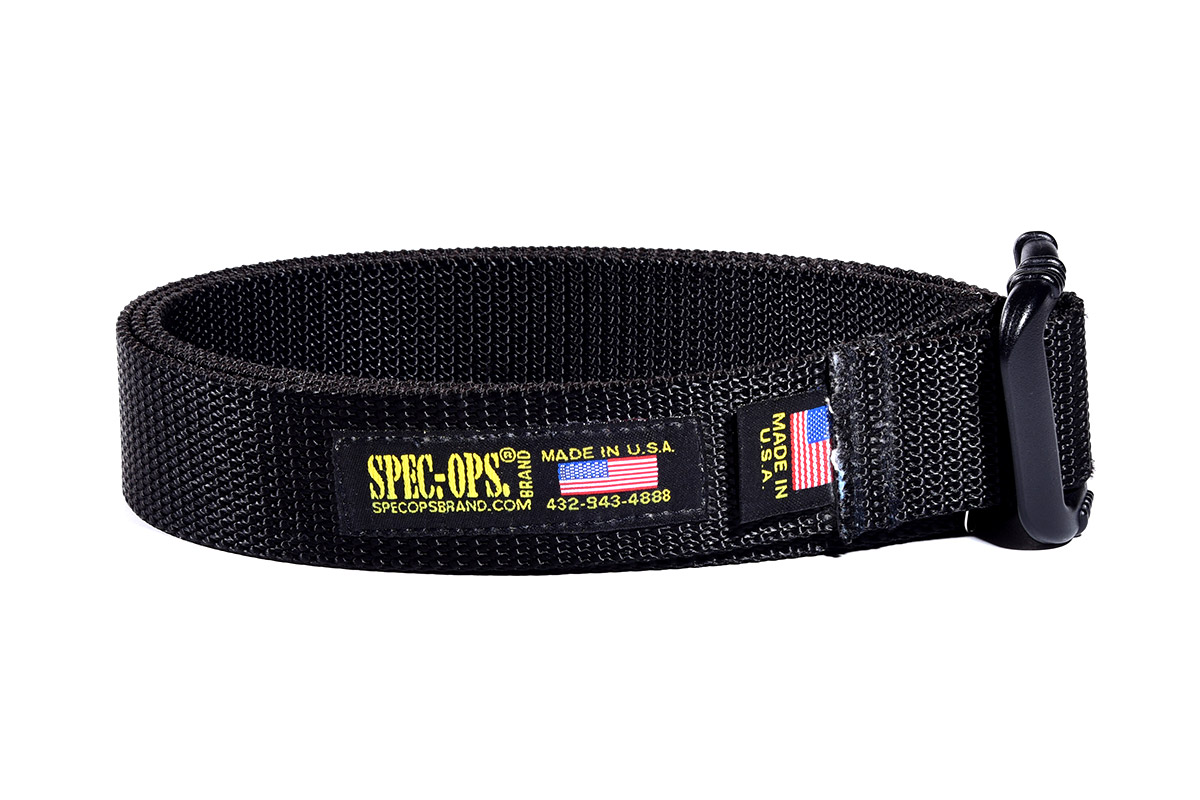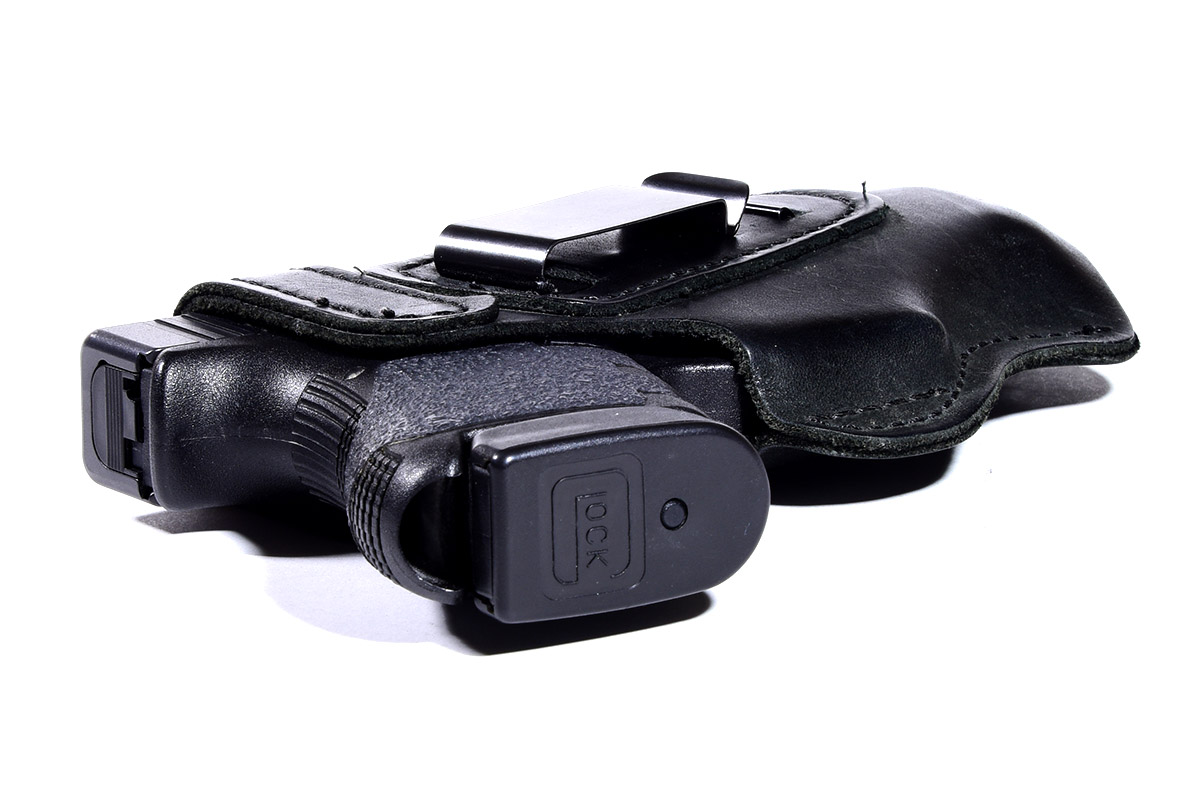I’m going to take a look at some of the Inside The Waistband IWB Holsters I’ve used over the past few years for concealed carry and cover some the many questions people who are looking to start carrying usually ask me.
In my book, the first things you need to take into account is what type of firearm are you planning to carry and in what position are you planning to carry it. The reason for this is that the firearm dictates, in a lot of ways, the type of holster you can get… if it’s some obscure firearm, then you might have a very limited selection of holsters available. If you are planning to carry a Glock, almost every model has MANY holster choices available. The location you planning to carry is also important because not all holsters will work for appendix (front of the body) carry.
Holster Types
In my book there are 3 core groups of IWB Holsters (in reality there are more, but these are what I tend to lump everything into).
- Leather 100% leather holster
- Leather / Kydex (or plastic) Generally a leather backer with a Kydex molded piece that the firearm fits into (a crossbreed style)
- Kydex / Plastic 100% kydex or plastic holster
In each of those categories, the IWB holsters often vary around things like being able to be canted (tilted one way or another), adjusted for depth of carry, if they are tuck-able (if you are able to tuck a shirt in around them), having one or two points of attachment to a belt, and the type of clips used to attach to belts.
Of these main types and their various options and configurations, I have the most luck and get the most comfort out of leather or crossbreed style holsters, in any of their configurations. Solid Kydex or plastic holsters are just too rigid and don’t move and bend with the body well enough for my taste. 100% Plastic or Kydex holsters are great for outside the waistband (OWB) or tactical carry options, but IWB, not so much.
Belt Clips
A section on belt clips? Yep! They are important.
Many of my holsters have metal clips, these clips work great and are strong. The downside to them, the paint wears off of them, they are prone to rusting once the paint has warn off and they have a nasty habit of eating holes in clothing.
Most holster companies offer some form of kydex or plastic belt clip option for their IWB Holsters. I would definitely suggest looking at those options as it will probably save you a few shirts and maybe a car seat at some point.
The kydex or plastic clips can wear as well, the edges are just generally less sharp and or easier to smooth out.
Tuckable?
Depending on the clips and type of holster you get, some are able to have a shirt tucked in between the clips and the holster. So if you are planning to carry with a tucked in shirt, this is an important detail.
You can still see the clips on the outside of the belt, but they are not really that noticeable. I’ve carried with a tucked in dress shirt a few times, without an over jacket, and had no issues with it. It’s definitely not the preferred method of carry for me, but it does work. So it’s a nice feature to have on a holster you are going to invest some money into… if at all possible.
Single-Point or Multi-Point
IWB Holsters are generally available in various configurations that have one clip (single-point) or two clips (multi-point).
Multi-point holsters are generally wider (have a larger backing) and space the clips out over a wider area. There are some exceptions to this like the INCOG holster, but in most cases, they are wider. The nice thing about this is it distributes the weight of the gun over a larger area, so that the weight of the firearm is a little more spread out. This might not be an issue if you are carrying a smaller Glock or something like that, but if you’re trying to carry a full size 1911 or something like that… Every bit of load distribution will help!
A thing to keep in mind with multi-point holsters is that the clip spacing can be a bit of a pain. Depending on the type of pants you wear, I have run into a fair amount of issues with belt loops interfering with the holster clips. This forces me to move the holster around a bit, sometimes not always in the best places. So, don’t expect your multi-point holster to work in the same place with every pair of pants you own. For some reason pants manufacturers all vary in the location of their belt loops.
Because of the belt loop issues, I often prefer single-point holsters, it’s just simpler. But that being said, I still use multi-point holsters all the time, it can just be a pain, literally and figuratively, depending on the pants I’m wearing.
Where to carry? 12 o-clock, 3 o-clock, 5 o-clock?
If you’re not sure where you want to carry, you should try out different places and see what provides you the best access to your firearm. A lot depends on your flexibility, the type of gear you are carrying and the type of clothing that you wear.
This is important for multiple reasons, but just from a gear perspective, if you really have your heard set on apendix carry, you probably wont be able to use a wide multi-point style holster. So it can have some effect on your gear options. If you are really undecided, I definitely recommend getting a single point holster with an adjustable cant, this way you can kind of cover most of the bases and try things out. It may not be perfect for all situations, but it will get the job done.
Also, some things to consider… if you can’t reach the small of your back, you probably shouldn’t carry at the 5-6 o-clock position, try the 3 o-clock position. And likewise, if you have a bit of extra belly in the front, appendix carry probably wont be comfortable for you.
Another thing that plays into where you carry is the types of activities that you do… If you are sitting all the time, driving a lot, running around, or doing god knows what, you want to make sure that everything is comfortable, secure and hidden. A good example of this is sitting, if you sit a lot appendix carry is MISERABLE for me.
It’s different for every person and every style, but personally I prefer the 4-5 o’clock position on my back, strong side. It just works and is the most comfortable for me for the range of things that I normally do. Bottom line, it’s different for every person and you will have to play around and figure out what works for you.
What climate are you in?
Depending on where you live, can greatly impact what will be comfortable to you for IWB carry.
As I mentioned before, multi-point holsters are often wider, and in the case of crossbread style holsters, that means you have a rather large piece of leather pressed against you. And if it’s hot or really humid out, let me tell you, it sucks, especially if you sweat a lot. So for this reason, during the winter I generally use my multi-point holster (or go back and forth between a single and multi-point IWB holster) and in the summer I pretty much only use the single-point style holsters.
Another thing about climate is clothing, if you are using an IWB holster you want to conceal the firearm, if you’re wearing really thin shirts because it’s 105°F out, then you may have to change your style up a bit… Or if you wear shorts without a belt or something like that, it wont really work. You need to take into account what you wear with what you will carry, because it all has to worth together.
Belts
For any type of carry, you really do need a decent belt. Standard dress belts don’t generally work that great, though, I’ve had less of an issue with belts then people would have led me to believe when I first started carrying.
The primary thing to make sure of with a belt is that it’s not wider than the clips on your holster, because if it is, it wont work at all. Most IWB holsters will take up to about a 1.5″ belt, any wider of a belt, and you’re probably going to be real limited in your selection of holster clips.
The key thing I’ve found with belts is that they need to be a little on the rigid side. It helps them support the weight of an IWB holster a bit better. So a standard, decent quality leather belt, or a stiff woven belt will generally work. I have a few leather belts that I like, but I generally use a simple SPEC-OPS brand 1.5″ better BDU belt. It works great, and I can adjust how tight the belt is easier than a belt with fixed holes. Also, they are only about $20 USD on Amazon.
Some of My Holsters
Through the years I’ve gone through a bunch, but the main ones I use for IWB carry are a simple single point leather holster (Pro Carry LT) that I found at the The Holster Store and a Theis Holsters Tuckable IWB holster. They are what I use 9.9 out of 10 times, occasionally I will just simply pocket carry without a holster at all, but that is pretty rare.
When I first started carrying I used a DeSantis Scorpion holster, but it sucked for my body type. I had to wear pants that were a couple sizes larger than normal to fit the holster in the waist and it dug into my side. DeSantis does have a bunch of other options and has seemed to update some of their models, so they are worth looking at, I would just stay away from any milti-point solid plastic holsters. They are too big and rigid to be comfortable for most.
Final Thoughts
Bottom line, there are A LOT of holster options out there… You don’t need the newest gizmo or contraption, or the most expensive tanned leather holster on the market. You need something that works for you, your body type and your activities. Over the years I’ve purchased a pretty wide range of holsters, ranging in price from about $25 to $100+… what I’ve found is that I like a $25 simple leather single point holster more than almost any other option I’ve tried. There are some levels of exception to that, but for the most part, it works 98% of the time, for me.
If you are looking for your first holster, I definitely recommend Theis Holsters. A single-point or multi-point holster from them will last you a while and I consider them to be really comfortable. You can also shop around and see whats out there, just don’t be afraid to pick up a cheep holster to try out to see if you like the style or features it offers. If it works for you, is secure, safe and allows you to do all the things you need to, it’s a great holster, no matter the cost.







You’ve pretty much purchased a number of holsters there. And I know you’re already an expert with it. Well, by just reading your article, I can really tell. Can’t blame your friends if they’re asking for your help and opinions about holsters.
“If it works for you, is secure, safe and allows you to do all the things you need to, it’s a great holster, no matter the cost.”
Great advice. Thanks for the share. Really very helpful. I know you will be a great help to many.
I bought a IWB Holsters .It’s a bit bulky but very comfortable, better used during cold clothing weather. The ride height isn’t perfect but it’s not terrible either.